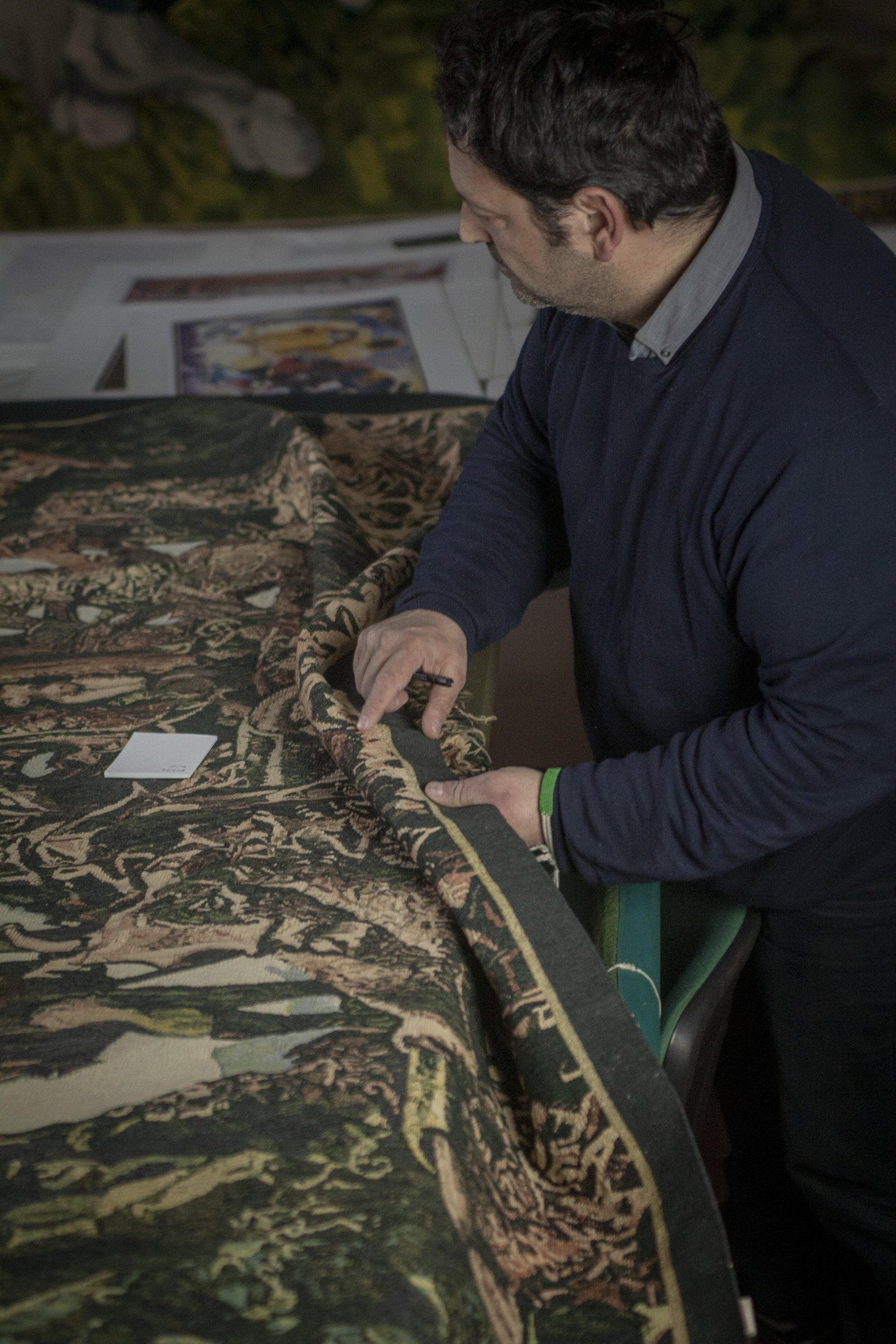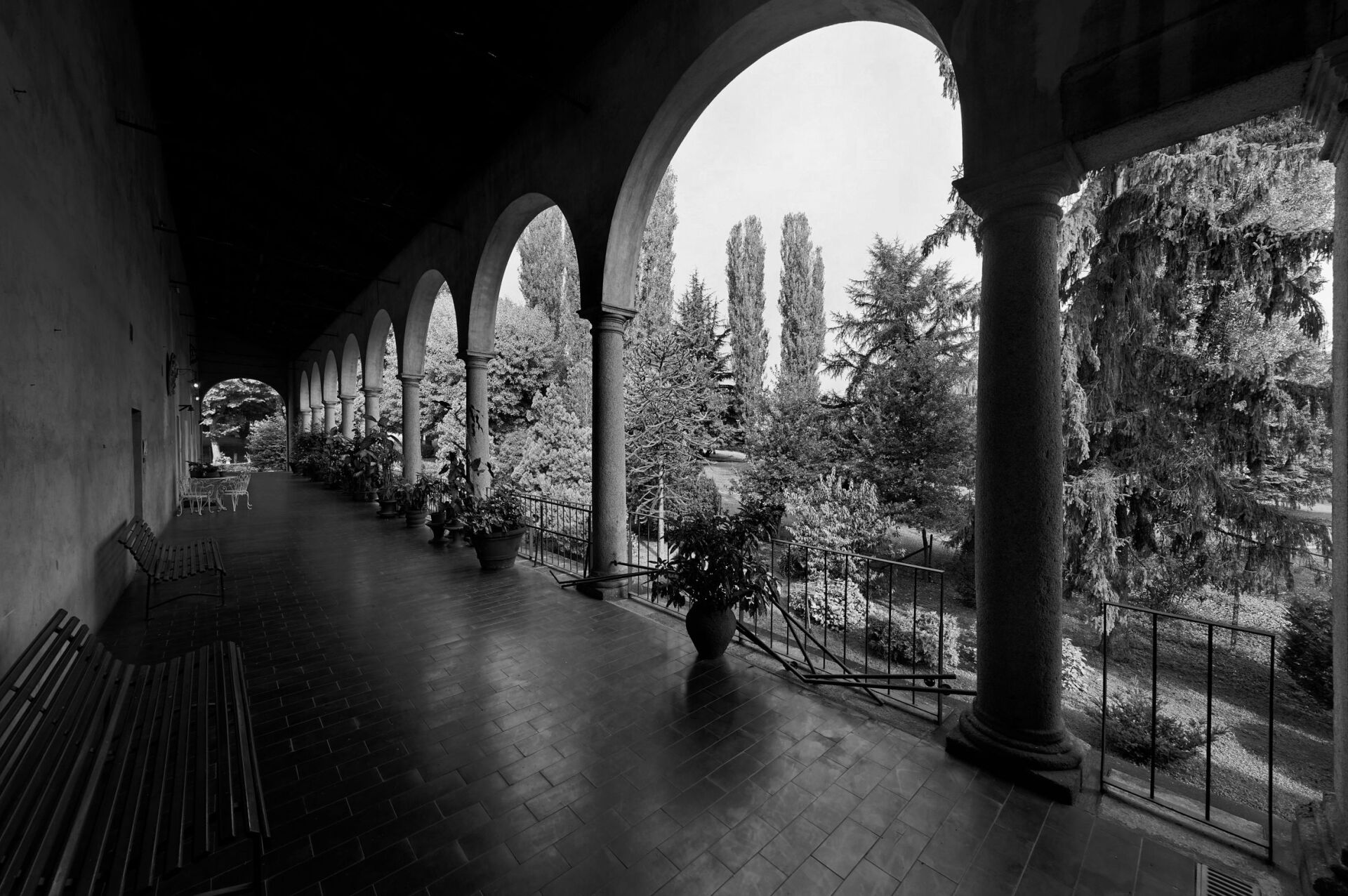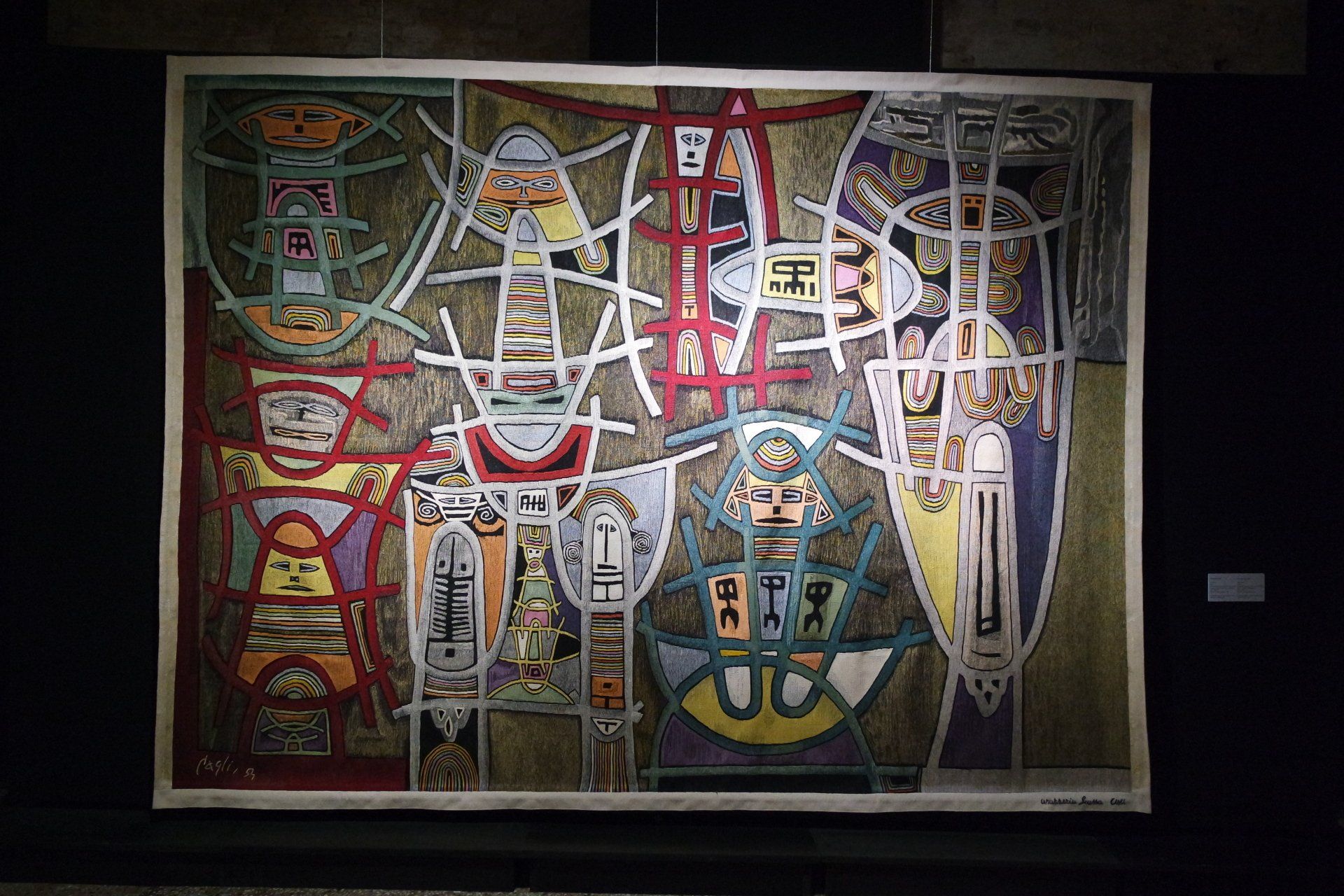In dialogue with Massimo Bilotta of Arazzeria Scassa, a precious past and contemporary art
The director of the Arazzeria Scassa talks with us: the legacy of art and the story of a family

The Certosa di Valmanera stands out amongst the greenery of the vast park in its surrounds. This ancient and imposing structure once covered a much larger area, judging by the drawing depicting its main edifices, within the famous 17th-century collection titled Theatrum Statuum Sabaudiae.
The Certosa, sought after and founded by the Vallombrosian Benedictine monks, has been here for a long time, since an unspecified date somewhere between 1039 – the date that the Order was founded – and 1391, when the Certosa passed to the Order of Carthusian monks. An extensive history, in some ways suffered, comprised of curtailments, foreign invasions and dispossession.
In March 1801, the Certosa ceased to exist as a legal entity, with the Napoleonic government declaring its suppression and dissolving the community that lived here, with some going on to join the Certosa di Casotto and others retiring to private life. A few months later, in August of the same year, the building was plundered of all its furnishings, including the fixtures, whilst a wealth of statues and altars were transferred to other churches in the city. The significant patrimony of art and culture that the Certosa safeguarded within its walls vanished without a trace. Indeed, the only part of the ancient and branched building that survives today is an extensive loggia and a series of spaces where, in 1963, it was decided to house the Arazzeria Scassa atelier.
It is here that
17th- and 18th-century looms alternate along the whitewashed walls, flanked by lengthy tables used for the careful restoration of tapestries and carpets that come to the tapestry atelier after having spent much time in stately homes or having simply passed from one heir to the next. It is here that the famous poet
Giuseppe Ungaretti held an event on 16th March 1968 where he read his poems and conversed with the public who had filled the hall of the atelier. In this same room, the weavers still sit today on simple and functional wooden benches that
Massimo Bilotta, the new Director of the Arazzeria, recounts were designed by
Ettore Sottsass Jr., a talented designer, attracting the envy of the world.

Talking with Massimo, the names of great artists and extraordinary events alternate with the memories of a child, a boy and a family whilst the art historian remains delightfully disoriented. I sit on one of the benches to take notes, starting with the first question.
I ask him what it meant for him to grow up in the atelier of an art workshop like that of the Arazzeria. For Massimo, until he interfaced with the world of connoisseurs, scholars and enthusiasts, his experience was that of any other boy – and now a man – growing up with personal memories. “I fell asleep listening to the soft and mechanical motion of the loom. I knew that my aunt and mother, together with the other weavers, were producing those sounds. It was reassuring. In particular, I would listen to the dull sound produced by the metal comb hitting the weft, to fasten the threads once and for all. They are the sounds of my childhood.”
The death of Ugo Scassa, the necessity of choosing
Massimo’s uncle, Ugo Scassa, passed away suddenly in early 2017, leaving Massimo alone with his widow, Katia Alcaro and his sister, Franca Alcaro, Massimo’s mother.
Within a few months, they decided to carry on Ugo’s project together. “I spoke extensively with my aunt and with my mother. We considered what to do, what Ugo would have done. We could sell, given the Arazzeria is an extremely sought-after luxury brand. But we wanted to go on. Aunt Katia, Ugo’s wife, is as tough as nails and so is my mother. These two svelte women are quite reserved but hide nerves of steel and an iron will. Their determination is exemplary.”
The Arazzeria came about as Ugo Scassa’s project, following his experience with the Galleria Il Prisma in Turin and after the creation of the art and design brand, Italia Disegno. In addition to personally overseeing the preparation of the exhibitions and administering the gallery, Scassa had turned to interior design and the creation of furnishing accessories. Throughout this period, contacts were established with many artists still making a name for themselves – at the outset there was Lucio Fontana, Luigi Spazzapan and a lasting artistic partnership with Corrado Cagli.
The tapestry workshop, which was ultimately transferred to the Certosa, became a crossroads for artists and intellectuals, whilst contacts and job opportunities were created in the Roman studio of Cagli. The artist soon became the Artistic Director of the artisan workshop and managed to involve his other friends and colleagues, including Marcello Avenali, Fabrizio Clerici, Renato Guttuso and Umberto Mastroianni, who quickly became clients of the tapestry atelier.
“I have a some quite distinct memories of Cagli,” observes Massimo Bilotta. “Nevertheless, I was young but when he came here to visit, he would bring me toys. For me, he was a man with a big smile and was a nice person.” I look at him enviously – not everyone can say that they received childhood gifts from one of the most brilliant artists of our post-war period.
The Arazzeria’s artistic life really does conserve important memories but it also looks towards the future.” So, what will be the future projects?
“Some think that our business has reached its end but it is not – we still have high-level clients. Whilst tapestry is a luxury creative production, we are not standing still, our looms are still working.”
When asked what project they are working on, the director hints at an answer but
he cannot reveal much. “A famous Parisian maison requested a large tapestry. We are creating it on one of the largest looms in our atelier and it is currently in the production phase,” he replies elusively. “But we do not only produce works of art, we have also finished creating
high-warp weaving courses with the
Brera Academy in Milan and we are developing similar projects with other
Academies.”

A legacy to be preserved and handed over to the future
Ugo Scassa was very keen on this aspect, on the creation of a school, on the importance of passing on to the future generations the ancient knowledge, the working of the loom and its thousand secrets. Indeed, amongst the documentation preserved in the Scassa Archives are papers, notes typed out by the founder himself that lay out step-by-step the strengths of a school that allows young people to continue this ancient profession. Scassa himself thus began reading up on the history of tapestry production by studying the technique and perfecting his ability with fabric samples initially intended for processing rugs. This artistic knowledge has gradually become more and more specialised.
What does Massimo Bilotta remember of his uncle’s work as a tapestry maker?
“He was meticulous beyond all measure. He loved his art and demanded perfection – it was that or nothing. He often told me of when, struggling with the tapestries of the Carte for Corrado Cagli, he decided that the work did not align with his inner and personal aesthetic evaluation. So, in order to give himself no other option and to have the weavers redo the whole thing, he slashed the weft with a razor blade, in a night of silent evaluation and second thoughts. It could not be salvaged, you just had to start over. The results were true masterpieces.”
Throughout the years, Arazzeria Scassa has exhibited its works at many events and exhibitions, occasions for meeting and liaising with an audience that approaches this art form with the legacy of memories linked to antique tapestries, 17th-century or 18th-century for example, with rural landscapes and backlit young ladies. Often, this textile art is considered as specific to a historical period, well-defined iconographically.
What the Arazzeria Scassa has achieved instead – we could say with a global resonance – is to indissolubly associate the idea and practice of the tapestry with contemporary art.
“We create practically imperceptible tonal passages, as only a painter’s palette can do, and that is why we can approach contemporary art. The backgrounds of colour for many contemporary artists – Kandinsky comes to mind but many, truly many others could also come to mind – they are not defined. The colours blend, overlap, mix to create unprecedented, indefinite nuances. We follow them, interpret them, enhance them thanks to the technical innovations introduced by Ugo Scassa. My Aunt Katia and my mother are the custodians of unparalleled knowledge. We just have to carry this legacy forward.”
We would have liked to speak with Katia and Franca but our time has now come to an end. Massimo must head off and join his family, his wife Elena and their children. Do they know how to weave? “Yes, even if they are young, they have learned the basics. But their greatest joy is being able to play with wool and colours.”
We will have the opportunity to meet the two women protagonists
of so much art, the
Alcaro sisters, at another time. The noises of the metal comb striking the weft and warp begin up once more, the work resumes as the Arazzeria once again becomes a
forge of masterpieces.



